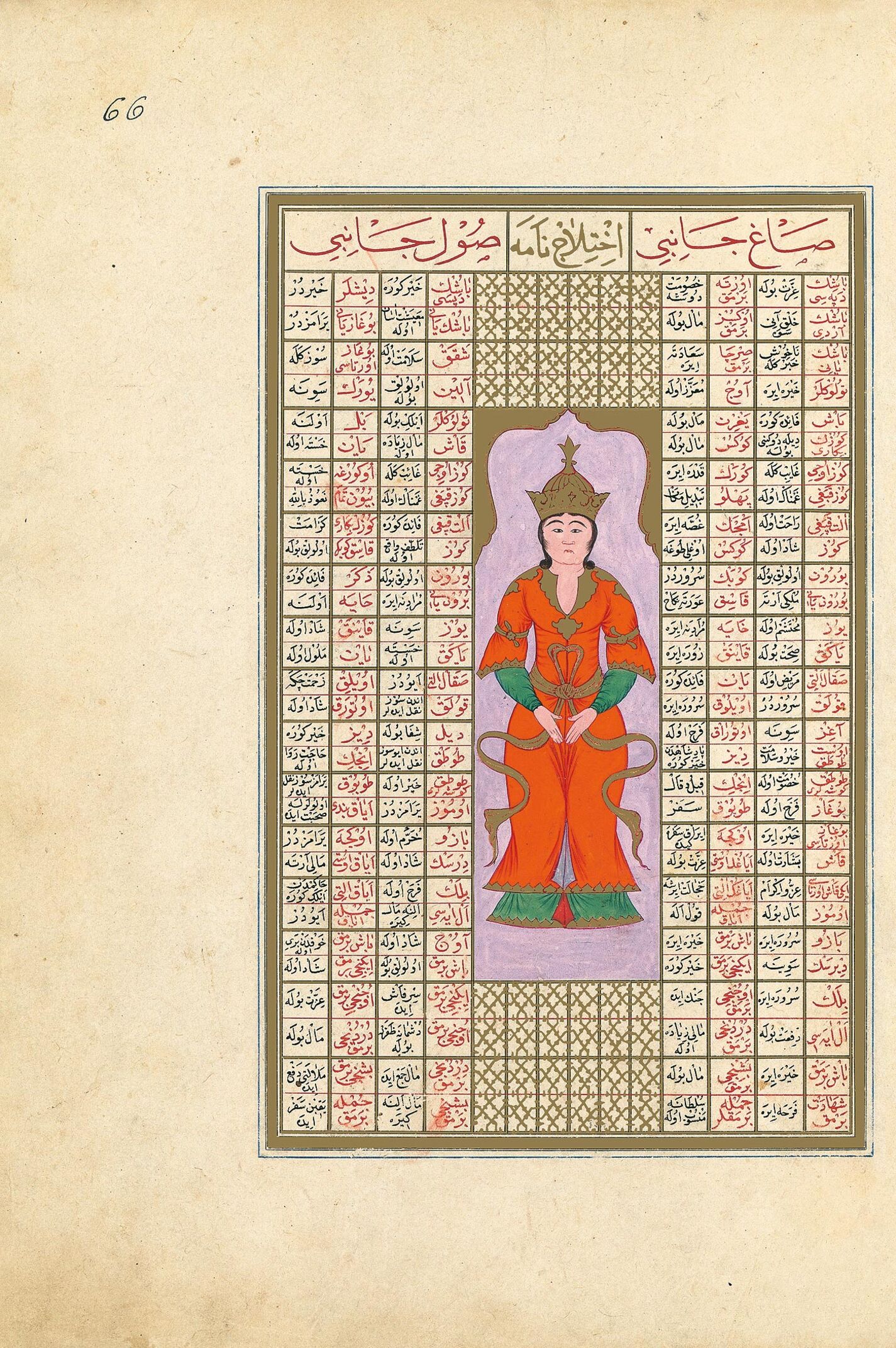The Ikhtilajnama or Book of the Bodily Spasms is a text about predicting the future by interpreting the parts of the body affected by spasms.
The figure illustrating the treatise, the text of which is arranged in a checkerboard pattern, is difficult to interpret in relation to its textual significance. It represents a crowned figure facing forwards, richly dressed in a long green tunic with long sleeves and a short-sleeved, orange outer garment with gold embroidery which is slightly shorter than the tunic underneath. A long scarf-like belt floats and curls at the two sides in a mirror-like composition. The hands of the figure are open, the fingers joined under the stomach. The individual parts of the body are not highlighted as, for example, in some images of the so-called Zodiac Man, so this standing figure probably only has the generic significance of an oracle divining the future. The miniature in the Kitab al-bulhan (f. 51r), although similarly generic, seems to make the meaning clearer since the oracle’s hands are raised with open palms in a gesture of foretelling and he is flanked by two lit candles. The Ottoman painter may have not paid much attention to these details, or perhaps the position of the hands depicted here was a more evident symbol of divination in Ottoman Turkey.

The Ikhtilajnama or Book of the Bodily Spasms is a text about predicting the future by interpreting the parts of the body affected by spasms.
The figure illustrating the treatise, the text of which is arranged in a checkerboard pattern, is difficult to interpret in relation to its textual significance. It represents a crowned figure facing forwards, richly dressed in a long green tunic with long sleeves and a short-sleeved, orange outer garment with gold embroidery which is slightly shorter than the tunic underneath. A long scarf-like belt floats and curls at the two sides in a mirror-like composition. The hands of the figure are open, the fingers joined under the stomach. The individual parts of the body are not highlighted as, for example, in some images of the so-called Zodiac Man, so this standing figure probably only has the generic significance of an oracle divining the future. The miniature in the Kitab al-bulhan (f. 51r), although similarly generic, seems to make the meaning clearer since the oracle’s hands are raised with open palms in a gesture of foretelling and he is flanked by two lit candles. The Ottoman painter may have not paid much attention to these details, or perhaps the position of the hands depicted here was a more evident symbol of divination in Ottoman Turkey.